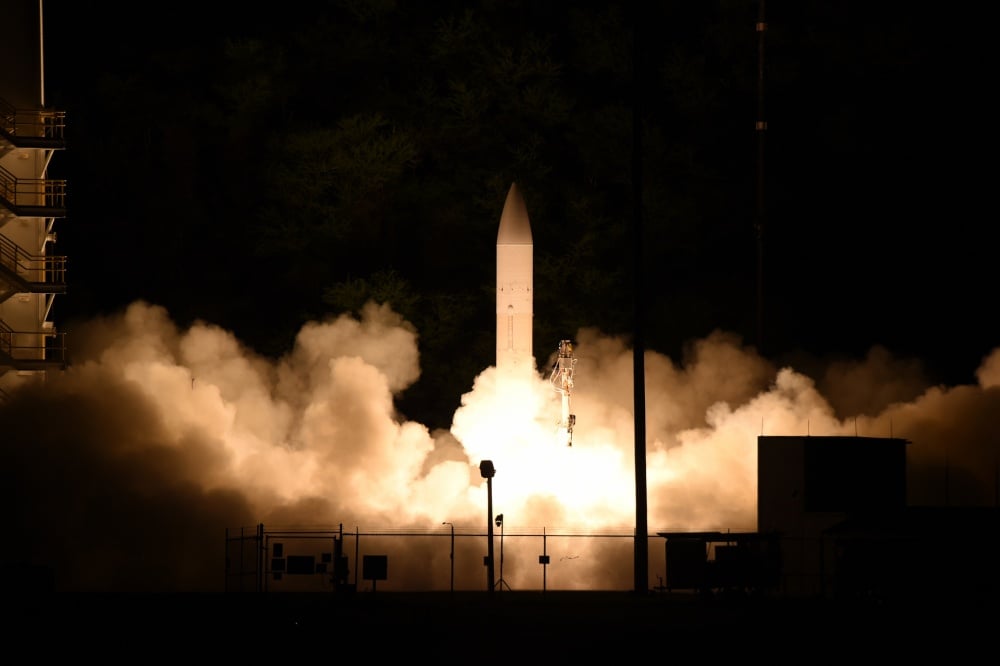
Launch of Army-Navy Common-Hypersonic Glide Body (C-HGB) in Hawaii on March 19, 2020.
WASHINGTON: From missile flight tests to gunpowder formulas to new kinds of combat units, 2021 will be a big year for the Army as it races to field a family of Long-Range Precision Fires in 2023, the generals overseeing LRPF tell me.

Lt. Gen. Neil Thurgood
Lt. Gen. Neil Thurgood, head of the Rapid Capabilities & Critical Technologies Office (RCCTO), runs the two most demanding LRPF programs, both of which are due to deliver combat-capable prototypes to operational units in 2023:
- the Long-Range Hypersonic Weapon (LRHW), whose classified range is probably in the thousands of miles; and
- the Mid-Range Capability (MRC), where “mid-range” means about 1,000 miles, three times the range of any current Army missile.
Brig. Gen. John Rafferty, head of the LRPF Cross Functional Team at Army Futures Command, oversees the rest of the portfolio:

Then-Col. John Rafferty teaches field artillery operations in Tajikistan.
- the 300-plus-mile Precision Strike Missile (PrSM), whose baseline version enters service in 2023, with an upgrade swiftly following in 2025;
- the upgraded long-barrel howitzer known as Extended Range Cannon Artillery (ERCA), also entering service in ’23 with upgrades in ’25; and
- the Strategic Long-Range Cannon (SLRC), an experimental project whose first full-range test shots will happen in ’23.
Collectively, these weapons will give future commanders a wide range of long-range options to hit targets traditionally reachable only by airpower – if the Army can to keep development on track and then can afford to buy them.
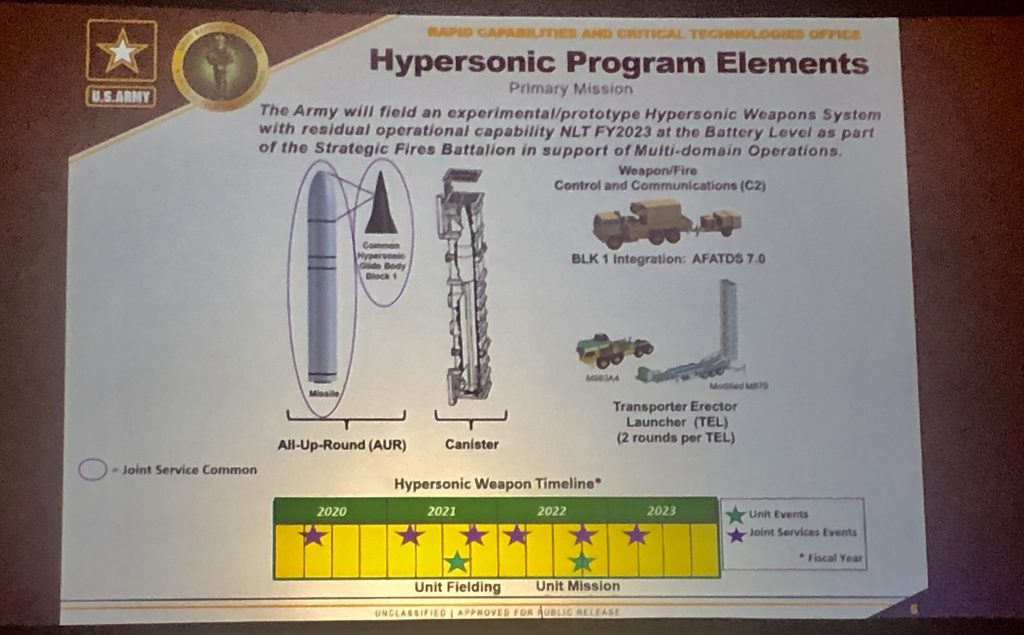
Army Long-Range Hypersonic Weapon (LRHW) concept
Long-Range Hypersonic Weapon (LRHW)
The US has never fielded a hypersonic weapon before, so the Army must create not only the new weapons themselves, but an industrial base to build them, new units to use them and the Concepts of Operations and doctrine to make them as effective as possible.
While prototype LRHW missiles won’t be ready for operational units until 2023, “we’ll actually field that first unit about 11 months from now,” in September 2021, Thurgood told me. “We’ll give them all the equipment, [except] the live rounds… so they can begin training, [and] in ’22 they’ll actually start going to all the flight tests.”
One LRHW flight test is scheduled for 2021, late in the year, followed by a more ambitious test in early 2022 when multiple missiles will be fired at once.
So far, the hypersonic glide bodies for those test flights are being custom-built at the Energy Department’s Sandia National Laboratories in New Mexico, which invented the design. But Sandia’s scientists can’t manage mass production, and for that the Army’s turned to industry. Prime contractor Dynetics and its partners, including Lockheed Martin, already have teams at Sandia, learning how to build the glide bodies. Around November 2021, Thurgood said, Dynetics will take the lead and start building glide bodies itself, albeit still at the Sandia facility.
Then, around April or June of 2022, Dynetics will start production at its new factory in Huntsville, Ala., with Sandia experts on-site to help as needed. About that same time, Thurgood added, Lockheed Martin will start putting together glide bodies and rocket booster together at its new Cortland, Ala. facility, building full-up hypersonic rounds for both the Army and the Navy. (The Army version will have a container that lets it launch from trucks; the Navy will use the same missile in a different container to allow launches from submarines).
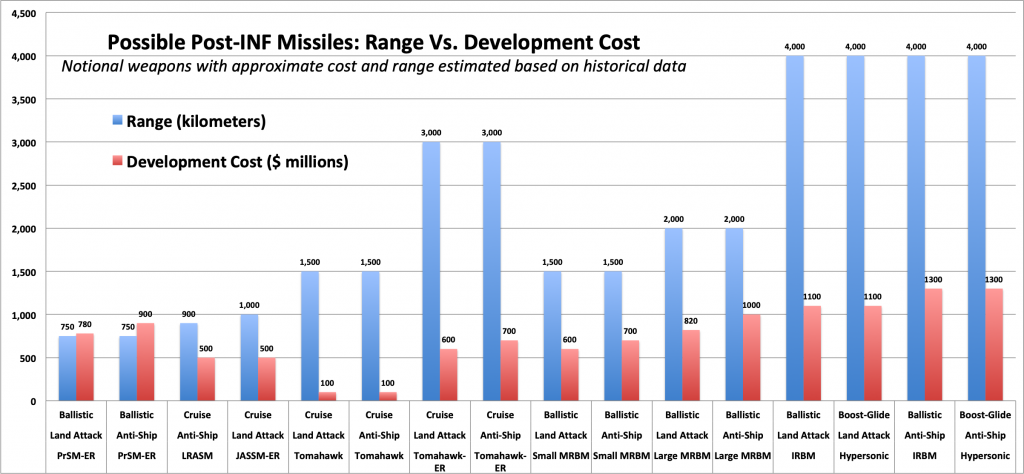
Notional ground-based missiles derived from existing systems: Precision Strike Missile Extended Range (PrSM-ER); Long Range Anti-Ship Missile (LRASM); Joint Air-to-Surface Standoff Missile Extended Range (JASSM-ER); and Tomahawk.
Notional missiles requiring all-new development programs: Small Medium-Range Ballistic Missile (Small MRBM); Large Medium-Range Ballistic Missile (Large MRBM); Intermediate Range Ballistic Missile (IRBM); Hypersonic weapons.
SOURCE: CSBA; some range figures courtesy Ian Williams, of the CSIS Missile Defense Project.
Mid-Range Capability (MRC)
The Army has revealed very little about the MRC missile. The existence of the program was only revealed last month. We know that MRC prototypes will enter service in 2023, alongside other LRPF weapons, and that mid-range means about 1,800 km (1,000 miles). Thurgood wouldn’t even say whether it would be a cruise missile, ballistic or hypersonic. But given the tight timeline, he told me, it will need to be derived from an existing weapon in US or allied service, not a “new invention.”
Meanwhile, DARPA is developing a new hypersonic missile with the right range for MRC, under a program known as OpFires (“Operational Fires”). But the OpFires weapon won’t have its first full-up flight test until 2023. That means it can’t be the Army’s initial answer for MRC, but DARPA told me OpFires could become the long-term solution for this range band.
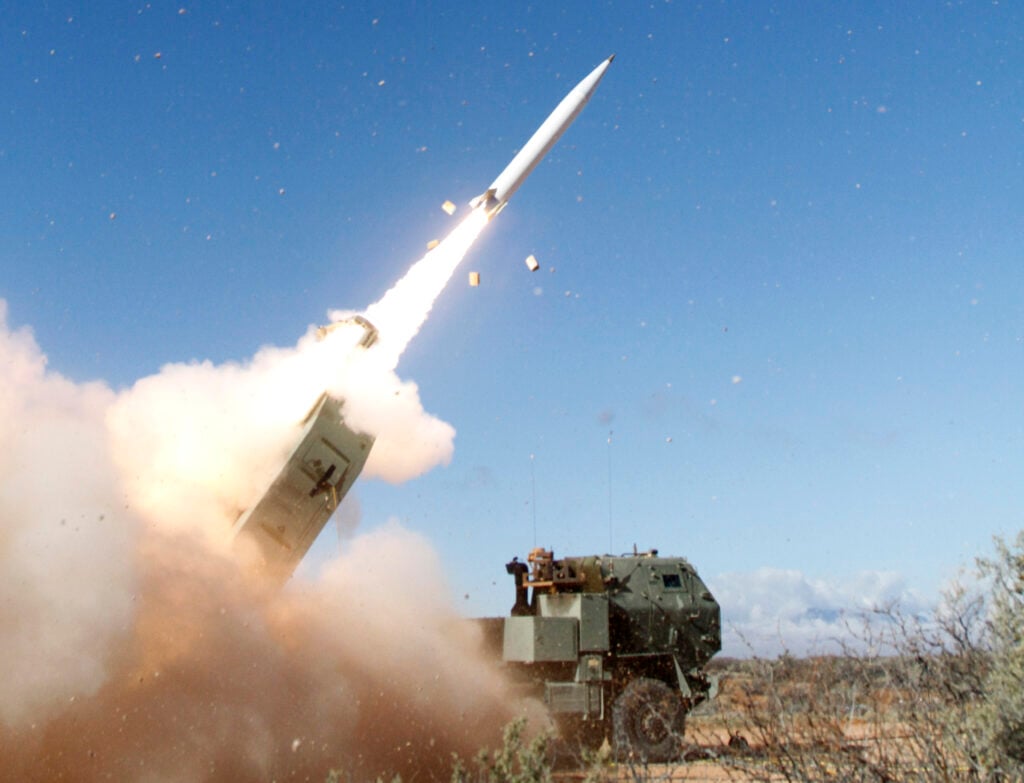
Lockheed’s prototype Precision Strike Missile (PrSM) fires from an Army HIMARS launcher truck
Precision Strike Missile (PrSM)
At 500-plus kilometers (310+ miles), PrSM is the shortest-range missile in the LRPF portfolio. Ironically, it’s replacing the longest-range missile that the Army has today, the Reagan-era ATACMS, and will be fired from the same launchers, the tracked MLRS and the wheeled HIMARS. HIMARS is also used by the Marines, who are interested in the weapon, as are the British.
PrSM had its first three flight tests this year, all successful. But those were short-range shots, designed to stress-test the missile – it’s actually harder on the high-powered rocket to rein itself in to hit a target 50 miles away than to let itself rip out to its full 300-plus mile range. The second half of 2021 will see three more PrSM flight tests, including the first full-range test and the first multi-shot test with two missiles fired seconds apart from the same launcher.
The Army wants at least one long-range test shot to take place as part of next fall’s Project Convergence wargames. But the service and prime contactor Lockheed Martin are still working out the details. For one thing, PrSM’s full range is too great to test at any over-land range where the Army can hold exercises, so it will probably have to be fired over water from a test site like the Navy’s Point Mugu or Vandenberg Air Force Base, both in California.
The initial version of PrSM fielded in 2021 will only be able to hit static targets on land. But the Army is also developing a sensor package to home in on moving targets, including ships at sea. This seeker will see its first flight test in 2021, fitted on a surrogate missile rather than a PrSM prototype, Rafferty told me. He expects the first seeker test in January and at least two more through the summer. The seeker should be ready for a planned upgrade of PrSM in 2025.
2021 will also see the Army’s formal Milestone B review for PrSM. Milestone B makes the end of the Technology Maturation & Risk Reduction phase (TMRR) and the beginning of Engineering & Manufacturing Development (EMD): Essentially, it’s a shift from research to development. The date is TBD, but “late winter/early spring… that’s our goal,” Rafferty told me. “Earlier is better for us, and I think we’re ready.”
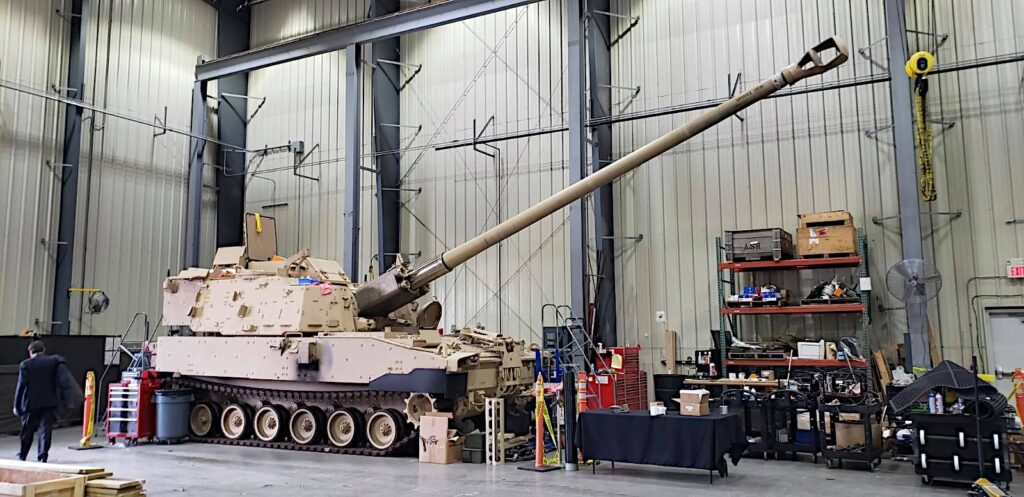
The prototype XM1299 Extended Range Cannon Artillery (ERCA) armored howitzer being assembled at Picatinny Arsenal.
Extended Range Cannon Artillery (ERCA)
The Army already has a full-up working prototype of the tank-like ERCA, an armored self-propelled howitzer, and the weapon played a starring role in this year’s recently concluded Project Convergence wargames. But there are plenty of details and glitches to work out before ERCA enters service in 2023.
In order to achieve double the range of existing Army howitzers, Rafferty explained, ERCA uses an extra-long barrel and new high-powered propellant, all of which puts a lot of stress on the weapon. “Barrel wear, that’s a real concern,” he told me. “We want to find the sweet spot” that gives the best balance between range and barrel life.
One crucial component is called the rotating band, a thin metal sleeve that fits between the barrel and the projectile. The rotating bands used to date weren’t tough enough, so the Army has ordered a harder version, which will be on hand by the end of this year for use in test shots next year.
In 2021, the Army will also finalize the chemical formula and physical configuration of the high-powered propellant – in layman’s, a new kind gunpowder. ERCA will also fire its first test shots with the new Excalibur Hit-To-Kill guided munition, Rafferty said, while the rocket-boosted XM1113 round will begin fielding to existing howitzer units. The Army’s also experimenting with a mechanical autoloader to replace human muscle in loading shells into the breech, but that system won’t be ready until about 2025: The first ERCA units entering service in 2023 will still have to manhandle their ammo into the gun.

British railway cannon
Strategic Long-Range Cannon (SLRC)
The weirdest weapon in the LRPF portfolio is a research project called the Strategic Long-Range Cannon (SLRC – pronounced, unbeautifully, “slork”), a supersized howitzer to fire rocket-boosted projectiles over 1,000 miles. While some critics have scornfully compared it to World War II-era superguns mounted on railway carriages, which proved easy targets for airstrikes, SLRC is actually a more nuanced idea.
Think of SLRC as a gun that shoots missiles instead of bullets, or a missile launcher that uses gunpowder and a barrel instead of a rocket booster. The idea is that a gun barrel, which you can reuse hundreds of times, is a cheaper way to launch a missile than a rocket, which you can just use once. The projectile still has its own motor, to extend its range and maneuver to the target, but that motor can be much smaller because it doesn’t have to get the missile off the ground.
Last year, a skeptical House Armed Services Committee asked the National Academies of Science to produce an independent assessment of the Strategic Long-Range Cannon concept. “We’re supporting that review now,” Rafferty told me, and the final report will probably come out in January.
The Army has already started firing dummy loads, called slugs, over short ranges to figure out what kind of propellant and projectile the SLRC will need. Two “world-class” companies – Rafferty declined to name them – visited the Army’s artillery center at Fort Sill, Okla. recently, and Rafferty said he was “very impressed” by their proposals for the propellant and projectile.
The Army will start building a full-up SLRC weapon in 2021, Rafferty told me, with the first test shots likely to come in 2022, and full-range shots in 2023. Then the service will decide whether to push ahead with the program.
Air Force awards SNC $13B contract for new ‘Doomsday’ plane
The win is a major victory for the firm in a competition that saw the surprise elimination of aerospace giant Boeing.


























